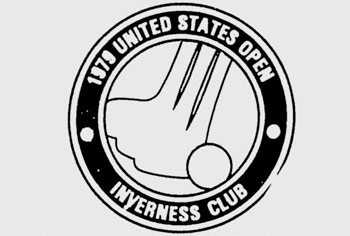The national golf spotlight returns to Inverness Club this month with the USGA’s 2011 Senior Open the week of July 25th. Frankly, I don’t know why there aren’t more majors at Inverness. Beautiful facility, great course and one of the few hilly spots around Toledo.
The course has seen a lot of big events – four U.S. Opens, the 1973 U.S. Amateur Championship, two PGA Championships and now two Senior Opens – and has had its fair share of history made on its rolling fairways and hard-ass greens. It was 25 years ago when Bob Tway holed in from a sandtrap on the 18th hole to win the 68th PGA Championship in 1986 (on a Monday, after Sunday’s final round was washed out with torrential rains) and snatch the championship away from Greg Norman.
For personal reasons, that’s probably my favorite memory. I worked there at the time and saw the whole thing, and remember it like it was yesterday. But easily the most charming bit of trickery Inverness ever had, and the one most people remember, was the Hinkle Tree.

Lon Hinkle, described by Blade columnist Tom Loomis as “a pleasant, innocuous golf journeyman,” was playing his first round of the 1979 U.S. Open at Inverness when he noticed a shortcut on one of the new holes, the 8th hole, a long, right-angle dogleg.
And then, according to this 2003 interview:
I remember looking at the 17th fairway going, man, there is a fairway over there. Which I became rather animated at finding a shortcut. And I was just kind of looking over there. “Yes, that is a fairway over there, but where is the green and how far away is it?” I had no clue, and which I which I kept talking about it…
The fairway was wide open, 17, and there was a big gap. That gap in the big trees and there were big trees and I hit a 1-iron in the 17th fairway. My caddy and I, we couldn’t have come — we just came up with 220. And I hit a 2-iron on the green, 2-putted for birdie, went on to tie for the lead in the Open. And as I was in the press room explaining the details of the round I said the 8th hole that I hit a 1-iron down the 17th fairway, a 2-iron up to green and I two-putted for birdie. I got around to about 11 or 12 before somebody in the back of the room said, “what did you do on No. 8 again?” And I went through the deal, and man, that was — it was a story for the press at that time. I call it a slow news day.

The USGA found this troubling, so they directed course superintendent Wilbert Waters and greens committee chairman Dr. Bob Yoder to find and plant a tree. A 25-foot Black Hills spruce tree was located and installed near the tee at No. 8 that would prevent such workarounds. It happened at 5:30 in the morning, and was front page news that afternoon.
Did it work? A little, perhaps, but not really: Hinkle recalled that during the second round Chi-Chi Rodriguez “teed it up on a pencil and just popped it up over the tree.”
“I’m a trick shot artist,” Rodriguez told The Blade the next day. “If you followed me around the course for 18 holes you’d see that. I’ve hit balls off coke bottles, paper cups and tee markers, but never in the U.S. Open.
“I thought they were going to put a real tree there, but they just put a Christmas tree in…They need a hot dog stand in there, but I’d hit over that, too.”
Hale Irwin won the 1979 championship, with an even par score. Hinkle finished 20 strokes behind. But the Hinkle Tree lived on until 2020, when Blade columnist David Briggs reported that a gust of wind finally took the tree down.
Inverness Club, of course, is well-known as the first club to open up its facilities to professionals in 1920, unheard of in its day. The pros pooled their money and bought a grandfather clock with this inscription:
God measures men by what they are
Not by what they in wealth possess
This vibrant message chimes afar
The voice of Inverness
It was founded in 1903, and yes, Toledo newspapers (at least, at the time, the Bee) paid close attention to the goings-on out Dorr Street.

